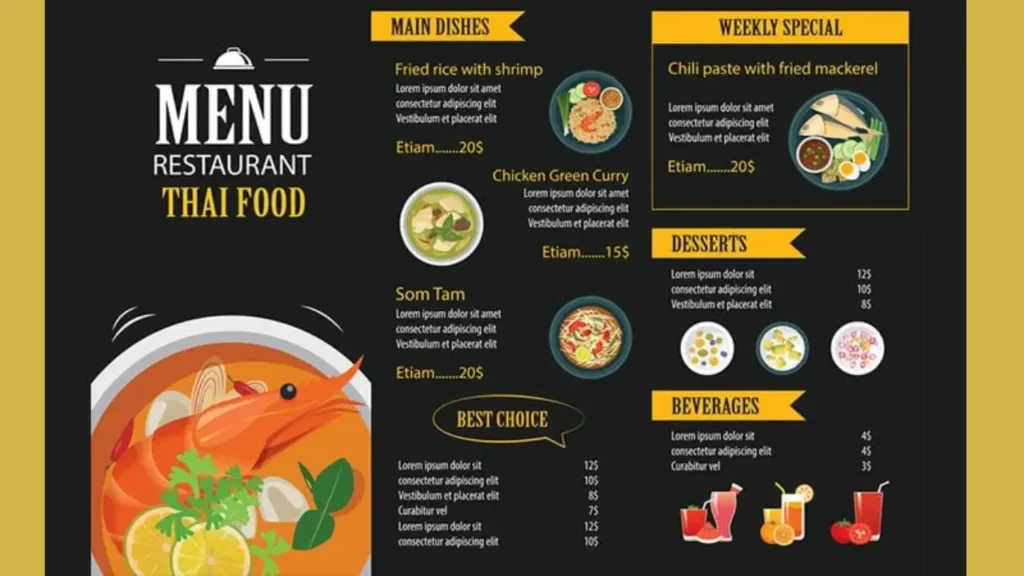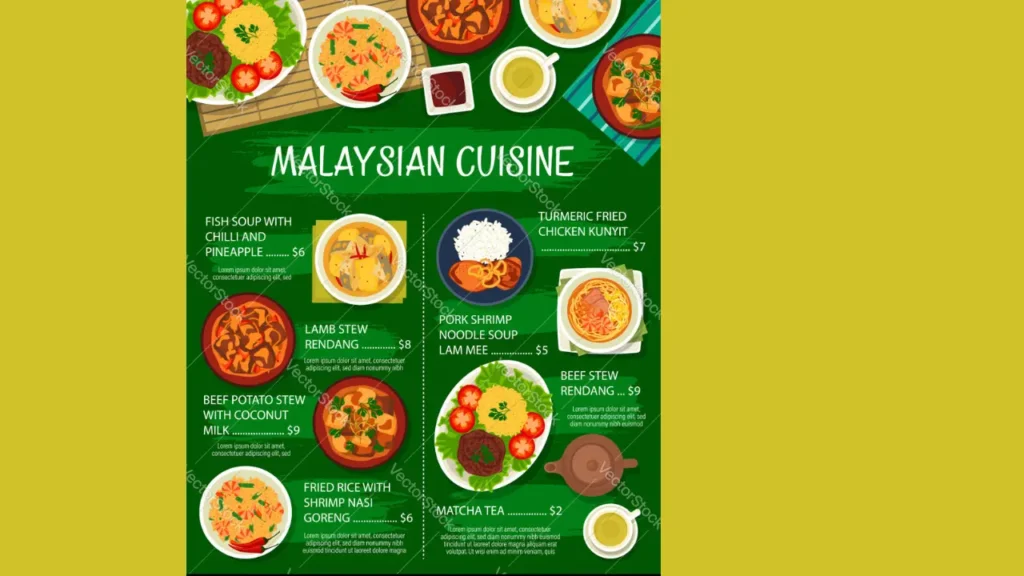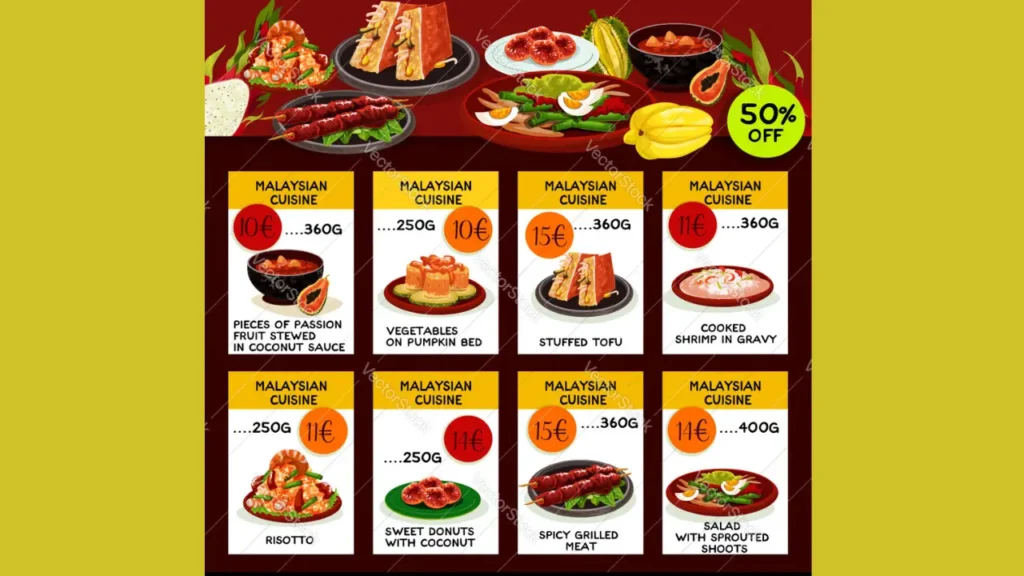Dining is more than eating; it’s an experience that engages all your senses. At the core of every dining adventure lies the menu, a carefully crafted guide that connects you to a world of culinary delights. This is not just a list of food options; it represents the soul of a restaurant and showcases its commitment to quality, creativity, and customer satisfaction. Let’s dive into the fascinating world of menus and explore why they are essential in shaping a restaurant’s identity.
What is The Menu and Why Does it Matter?
This serves as a bridge between the restaurant and its patrons. It offers a glimpse into the culinary philosophy and the expertise of the chefs. A well-designed menu caters to diverse tastes, ensuring that diners find something they love. Beyond its aesthetic appeal, it’s a critical tool in guiding customer choices and ensuring a seamless dining experience. Restaurants in Malaysia, known for their rich cultural diversity, take pride in crafting unique menus. With influences from Malay, Chinese, Indian, and Western cuisines, menus here reflect the nation’s vibrant food culture.
Detailed Menu
| Category | Dish Name | Description | Price (MYR) |
|---|---|---|---|
| Appetizers | Crispy Spring Rolls | Golden-fried rolls stuffed with vegetables and glass noodles | 12.00 |
| Satay Platter | Skewers of chicken, beef, and lamb served with peanut sauce | 18.00 | |
| Roti Canai | Fluffy flatbread with dhal curry or chicken curry | 10.00 | |
| Soups | Tom Yum Goong | Spicy Thai soup with prawns, mushrooms, and lemongrass | 15.00 |
| Creamy Mushroom Soup | Classic creamy soup garnished with truffle oil and croutons | 12.00 | |
| Salads | Malaysian Mango Salad | Fresh mango slices with chili, lime, and peanuts | 14.00 |
| Caesar Salad | Romaine lettuce, parmesan, croutons, and Caesar dressing | 13.00 | |
| Main Courses | Nasi Lemak | Fragrant coconut rice with fried chicken, sambal, and egg | 20.00 |
| Char Kway Teow | Stir-fried flat noodles with prawns, eggs, and bean sprouts | 18.00 | |
| Grilled Salmon | Salmon fillet with herb butter, served with mashed potatoes | 30.00 | |
| Chicken Parmigiana | Breaded chicken topped with marinara sauce and mozzarella | 25.00 | |
| Vegetarian | Vegetable Briyani | Aromatic basmati rice cooked with spices and mixed veggies | 18.00 |
| Tofu Rendang | Tofu cooked in rich, spicy coconut-based rendang sauce | 16.00 | |
| Desserts | Pandan Cheesecake | Creamy cheesecake with a hint of pandan flavor | 12.00 |
| Cendol | Shaved ice with coconut milk, gula Melaka, and green jelly | 10.00 | |
| Beverages | Teh Tarik | Classic Malaysian pulled tea with frothy top | 5.00 |
| Mango Lassi | Creamy yogurt-based mango drink | 8.00 | |
| Sparkling Water | Refreshing sparkling water with lemon or lime | 6.00 |
This table organizes The Menu offerings by categories, helping diners easily explore their options and make their choices. Each dish includes a short description and pricing for clarity and appeal.
Evolution Menu Over Time
The concept of this dates back to ancient times. In early Chinese and Roman civilizations, menus were used to display available dishes. However, they became widespread during the 18th century in Europe, particularly in Paris, where restaurants began listing their dishes on printed paper. In Malaysia, menus have evolved to embrace traditional recipes while incorporating modern culinary techniques. The advent of digital technology has further transformed menus, with QR codes and interactive digital menus becoming increasingly common.
Elements

A well-designed menu is much more than an artistic layout. It encompasses several key elements that enhance the customer’s dining experience:
- Variety: A balanced menu offers diverse options, catering to various dietary preferences and needs.
- Clarity: Simple, descriptive language ensures that diners understand the dishes.
- Pricing: Transparent and reasonable pricing helps build trust with customers.
- Visual Appeal: High-quality images and an attractive layout make the menu visually engaging.
Restaurants often invest significant time and effort into crafting a menu that reflects their brand’s essence.
Design
Menu design plays a critical role in influencing customer choices. A strategically designed menu guides diners to high-margin items while ensuring that they feel satisfied with their choices. Restaurants use various techniques, such as highlighting certain dishes, grouping items logically, and using appetizing descriptions to entice diners.

For instance, a restaurant specializing in Malaysian street food might organize the menu into sections like “Noodles,” “Rice Dishes,” and “Local Favorites.” This approach helps diners quickly locate their preferred options.
Cultural Significance
Malaysia’s diverse food culture is beautifully reflected in its menus. A typical menu might feature dishes like nasi lemak, char kway teow, and roti canai, each representing different cultural influences. Menus in Malaysia also often include vegetarian and halal options to accommodate the country’s multi-ethnic population. In addition to showcasing local favorites, many Malaysian restaurants offer fusion dishes, blending flavors from different cuisines. This diversity makes this in Malaysia truly unique and worth exploring.
Digital Menus
In recent years, digital menus have revolutionized the dining experience. With the rise of technology, QR code menus and tablet-based ordering systems are becoming increasingly popular. These innovations provide convenience, reduce wait times, and allow restaurants to update this instantly. Digital menus also enhance accessibility by including features like translations, calorie counts, and allergy information. For tourists visiting Malaysia, digital menus are especially helpful in navigating the local culinary scene.

Restaurant’s Brand
Menus are an extension of a restaurant’s branding. From the font and color scheme to the descriptions and dish names, every element of the menu communicates the restaurant’s identity. A high-end fine-dining restaurant may use elegant fonts and detailed descriptions, while a casual eatery might opt for a playful and colorful design. For example, a seafood restaurant in Penang might feature a menu with oceanic themes, emphasizing fresh and locally sourced ingredients. This attention to detail helps diners connect with the restaurant’s vision and values.
Key Features
| Feature | Description |
|---|---|
| Clear Categories | Organizes dishes into logical groups like starters, mains, and desserts. |
| Appetizing Language | Uses descriptive words to evoke taste and flavor. |
| Highlighting | Draws attention to signature dishes or chef’s recommendations. |
| Cultural Relevance | Includes dishes that reflect local traditions and cultural preferences. |
| Accessibility | Provides dietary information and ensures inclusivity for diverse customers. |
Seasonal Menus
Seasonal menus are becoming a popular trend, emphasizing fresh, in-season ingredients. These menus not only enhance the dining experience but also support sustainability. In Malaysia, seasonal menus often feature tropical fruits like durian, mangosteen, and rambutan, providing a unique taste of the region’s natural bounty. Seasonal menus also encourage repeat visits, as customers return to explore the latest offerings. This adaptability ensures that this remains dynamic and exciting.
Challenges
Crafting this is no easy task. It requires careful consideration of factors like ingredient availability, pricing, and customer preferences. Restaurants must strike a balance between offering variety and maintaining simplicity to avoid overwhelming diners. Additionally, cultural sensitivities play a significant role in Malaysia, where dietary restrictions like halal certification are crucial. Overcoming these challenges requires creativity, research, and customer feedback.
Why Menus Matter for Customers
For customers, the menu is more than just a list of options. It’s a gateway to an unforgettable dining experience. A thoughtfully designed menu makes customers feel valued and understood, ensuring they return for more. Whether it’s discovering a new favorite dish or reliving a comforting classic, this shapes every aspect of the meal. In Malaysia, where food is a vital part of the culture, menus serve as a celebration of the country’s culinary heritage.
Locations
| City/Region | Restaurant Name | Special Dish | Description | Price (MYR) |
|---|---|---|---|---|
| Kuala Lumpur | The Original Nasi Lemak Hut | Nasi Lemak | Coconut rice, sambal, fried chicken, and anchovies | 20.00 |
| Char Kway Teow Street Cafe | Char Kway Teow | Stir-fried flat noodles with prawns, egg, and bean sprouts | 18.00 | |
| Penang | Penang Laksa Corner | Penang Asam Laksa | Spicy and sour fish-based noodle soup | 15.00 |
| Street Grill Penang | Grilled Seafood Platter | Fresh grilled seafood with chili lime sauce | 30.00 | |
| Johor Bahru | JB Signature Roti Canai | Roti Canai with Chicken Curry | Fluffy flatbread with creamy chicken curry | 12.00 |
| Southern Satay Haven | Mixed Satay Platter | Chicken, beef, and lamb skewers with peanut sauce | 18.00 | |
| Melaka | Melaka Baba-Nyonya Café | Chicken Rendang | Slow-cooked chicken in a rich coconut-based spicy sauce | 25.00 |
| Peranakan Delights | Cendol | Shaved ice, coconut milk, gula Melaka, and green rice jelly | 10.00 | |
| Sabah | Borneo Seafood Paradise | Fresh Tiger Prawns | Juicy tiger prawns in a sweet and spicy sauce | 35.00 |
| Sabah Laksa King | Sabah Style Laksa | Coconut milk-based soup with noodles, prawns, and fish cakes | 20.00 | |
| Sarawak | Kuching Kolo Mee Spot | Kolo Mee | Light noodles tossed with minced pork and soy sauce | 15.00 |
| Sarawak Layer Cake Delight | Sarawak Layer Cake | Traditional multicolored layered cake | 12.00 | |
| Langkawi | Island Breeze Café | Seafood Tom Yum | Thai-style spicy soup with fresh seafood | 18.00 |
| Sunset Grill Langkawi | Grilled Lobster | Whole lobster grilled to perfection, served with butter sauce | 50.00 |
This table showcases popular dishes and their locations across Malaysia, making it easier for diners to plan a food tour or explore regional specialties.
Frequently Asked Questions
What is The Menu?
This refers to the curated list of dishes offered at a restaurant, showcasing its culinary identity and specialties.
Why are menus important for a restaurant?
Menus helps diners choose dishes, reflect the restaurant’s brand, and highlight its signature offerings and pricing.
How have menus evolved in Malaysia?
Menus in Malaysia blend traditional recipes with modern culinary trends, incorporating digital innovations like QR codes.
What makes a good menu?
A good menu includes clear descriptions, balanced options, appealing visuals, and considers dietary preferences for inclusivity.
Conclusion
The menu is the heart of every dining experience, shaping how customers perceive a restaurant and its offerings. From traditional handwritten menus to modern digital interfaces, menus continue to evolve, reflecting changes in culinary trends and technology. In Malaysia, menus capture the essence of the country’s rich and diverse food culture, inviting locals and tourists alike to explore its flavors.
Leave a Reply